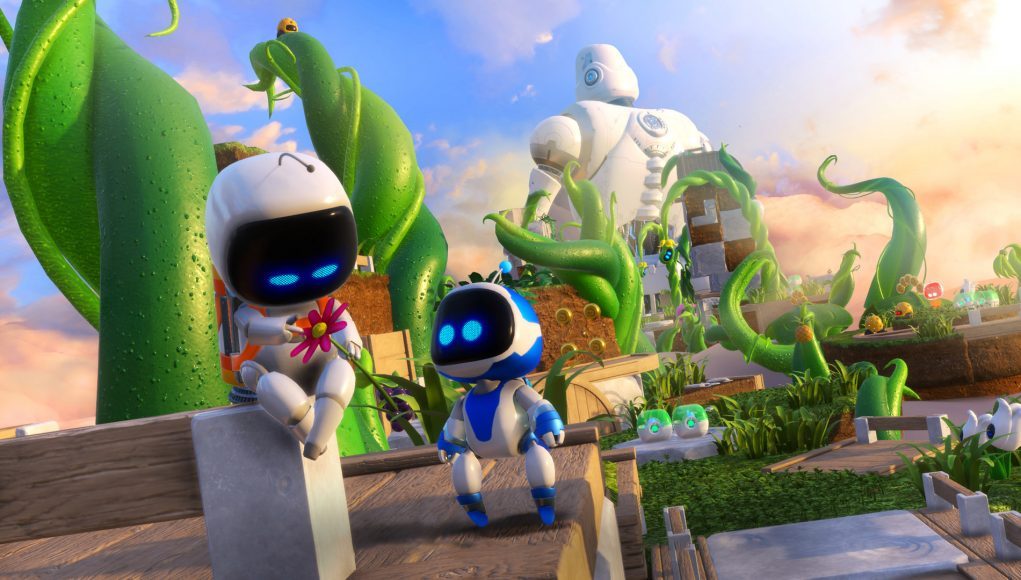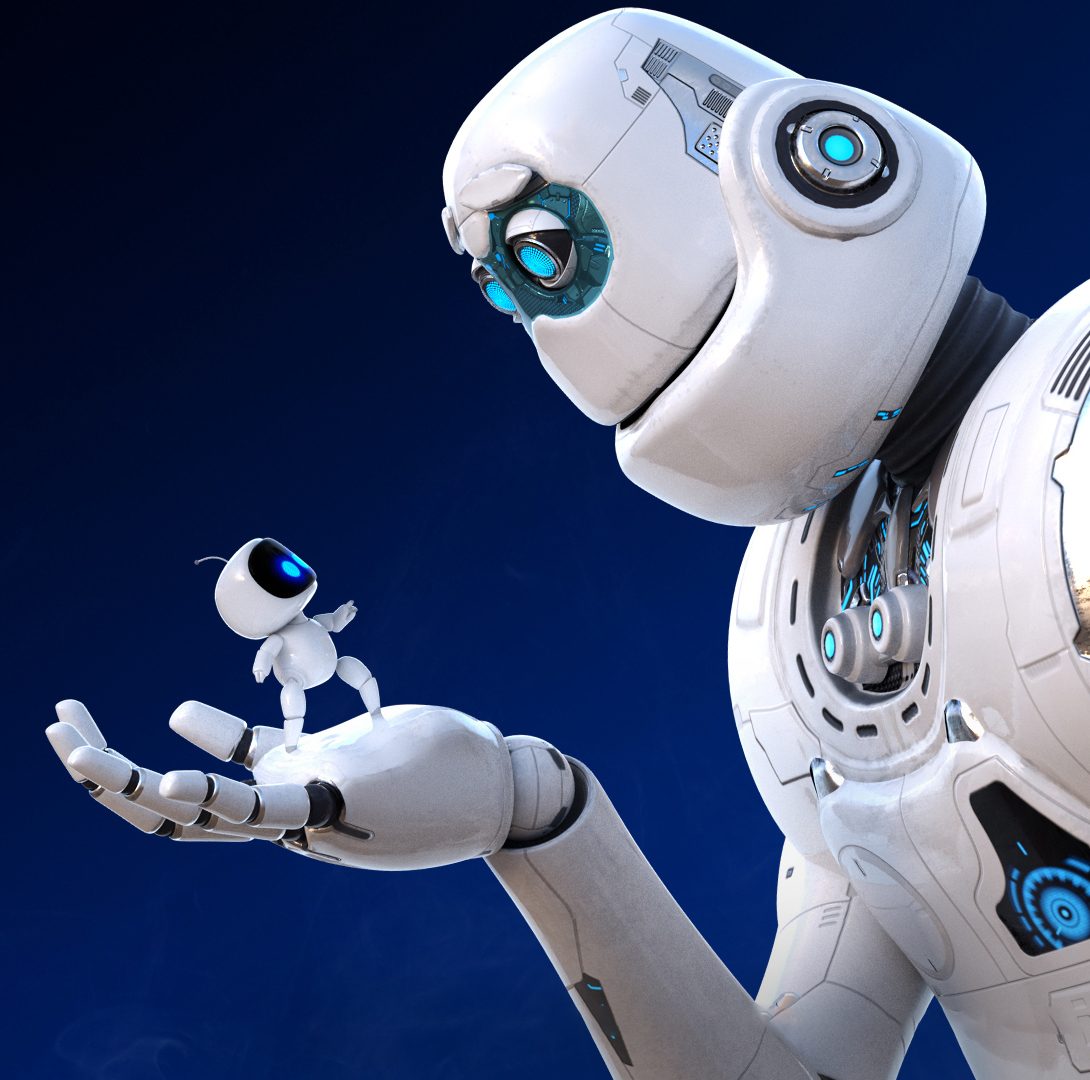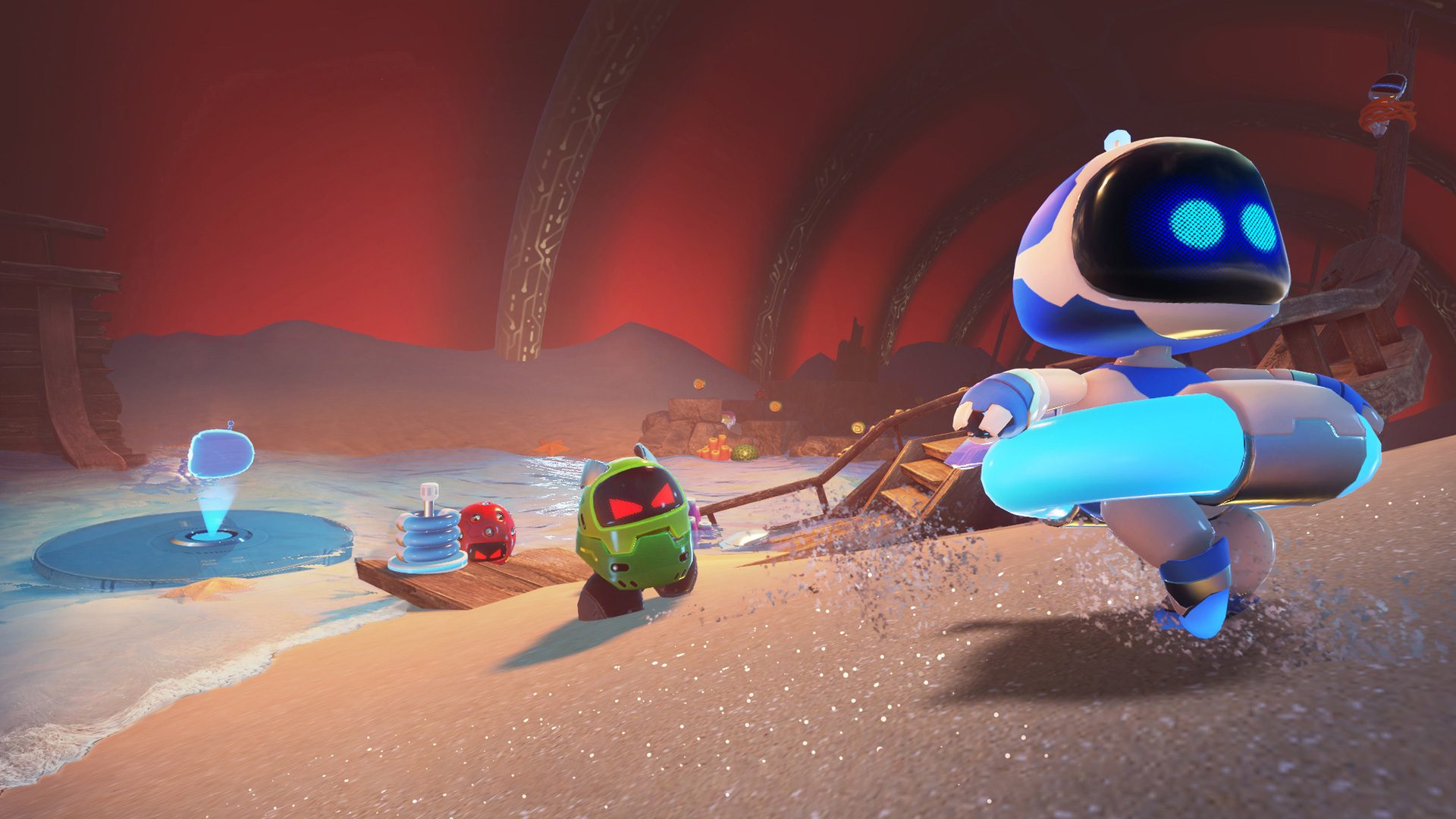Duality of Scales
Another prominent element of making Astro Bot feel unique to VR was building levels that naturally fit both the player and the much smaller player-controlled character, Astro.
“[…] every stage needed to work on two scales: a scale fit to welcome a small Astro jumping around from platform to platform, but also working on a human scale to retain the wow factor from first-wave PSVR titles where the VR player can be wowed by the simple magic of immersion in fantasy worlds,” Doucet tells Road to VR. “This informed the choice of levels: underwater, on top of clouds, inside the belly of a whale. This duality of scales between Astro and the VR player can also be found in the enemy designs that split between small enemies chasing Astro and larger enemies more interested in fighting you, the VR player.”

Astro Bot’s visuals also needed to work at both the macro and micro scales, while remaining performant enough for the now five-year old PS4 to meet PSVR’s high performance demands.
“The [art] team was quickly introduced to new techniques that would give us the best visuals for VR performance, but as with every new technique it takes time as old habits tend to die hard. With VR, old habits can be a problem because the medium requires re-thinking quite a lot of the way we create games,” says Doucet. “As a simple example, a 2D effect that would normally look great on a TV game looks flat in VR and needs to be given more volume, possibly adding cost and complexity in the making-process. […] Defining a good set of [art] building blocks was crucial in making the game look great in VR on a standard PS4. These materials make the world very tangible and that was very important for us.”
Of course, it helps that JAPAN Studio has a proprietary engine which has for several years been honed to meet the needs of VR rendering. Astro Bot’s creative demands pushed things yet further, with Doucet describing a “great synergy of both [art and programming]” during development.
“As expected with VR, the frame rate needed to achieve a smooth experience requires some serious optimization […] which were made as the team requested more and more wow features: interactive waves in the levels, reactive lava, cloud shader as well as a myriad of effects,” he said. “We create almost all the tech we need by ourselves. Doing so gives us the flexibility we need but means we are constantly creating features for our little engine. For example, to make designing levels more efficient, we also created a tool allowing us to see the level being modified in real-time so you could play a level in VR while building blocks around you would be moved in real-time by a level designer. Such tools were hard to get right but offered us unprecedented savings in return.”



